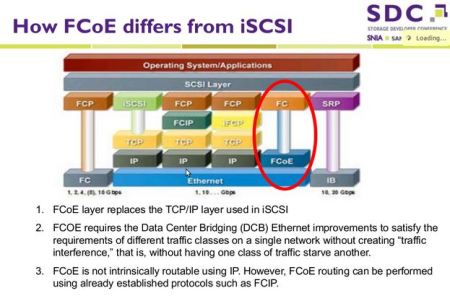There was a time that some claimed that iSCSI is not mature and is not suitable to serve the storage needs of high demanding data centers.
Those days have passed, and even those companies who promoted Fibre Channel, are starting to offer iSCSI products. There is no argument anymore that iSCSI has taken hold as the interface of the choice for new storage installations. All recent market studies have shown that Fibre Channel storage market has been either steady or has had a slight year to year improvement, while iSCSI storage market has been on the double digit rise year after year.
All features that have been once only available on high end fibre channel SANs are now available in iSCSI storage products. All the arguments about performance advantages of Fibre Channel are disappearing since 10G iSCSI has started shipping in numbers. And most important of all, there is no argument anymore that iSCSI storage costs are a lot less thanaFibre Channel SAN with equivalent performance and features.Only those companies who do not have iSCSI storage are still trying to promote Fibre Channel. But users are smart and do not see any compelling argument anymore to buy Fibre Channel SAN.
Having said all that, we do not think Fibre Channel is going to die anytime soon. As like any other technology, it takes a long time for an established technology to wind down and get replaced by another one. SCSI storage is still available when some predicted it will die 10 years ago. But from all market indications it is obvious that storage trends are moving toward IP Storage rather than Fibre Channel.
In summary, iSCSI, when properly implemented, provides high performance, hence making it a suitable to deploy in core applications. iSCSI is easy to understand and lower cost makes it a strong choice for medium to large enterprises. Having an end-to-end Ethernet IP environment is an added benefit to iSCSI. A properly designed iSCSI infrastructure and storage platform is good enough to handle any storage application currently handled by a Fibre Channel SAN.



 Posted by Roela Regalado
Posted by Roela Regalado ![snapshot[1]](https://dnfcorp.files.wordpress.com/2011/12/snapshot1.gif?w=300&h=183)






